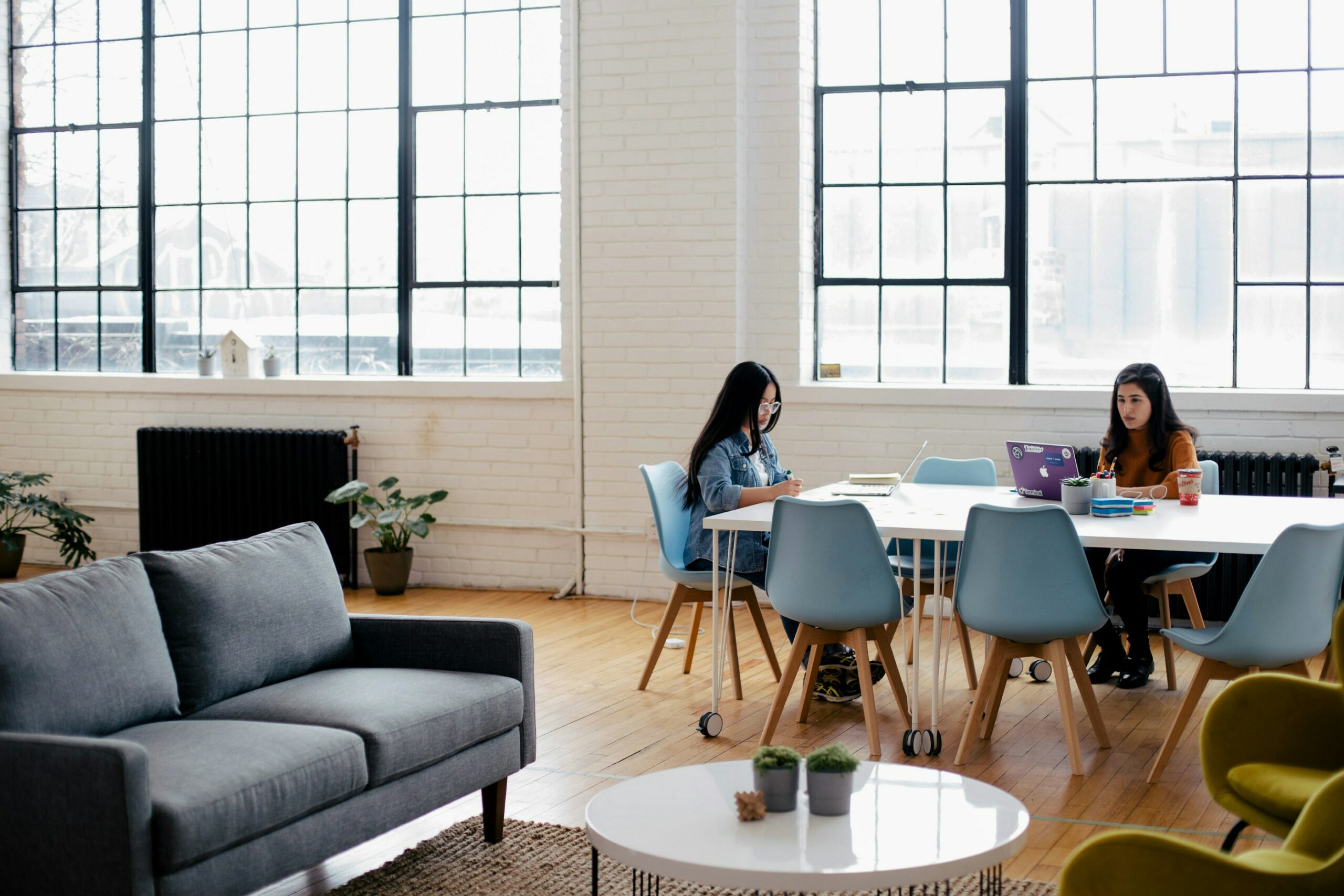The workplace has always been a reflection of broader social and economic trends. Nowhere is this more evident than in the evolution of office spaces in the UK. From the rigid, hierarchical designs of the early 20th century to the flexible, employee-centric environments we see today, office spaces have undergone significant transformations. As we look to the future, these spaces will continue to evolve in response to new challenges and opportunities, including the rise of remote work, sustainability concerns, and technological advancements.
The Past: Traditional and Hierarchical Spaces
In the early 1900s, the typical UK office was a far cry from the dynamic spaces we see today. Offices were designed with a strict hierarchy in mind, often reflecting the rigid social structures of the time. Managers occupied private, enclosed offices, while lower-level employees worked in large, open rooms filled with rows of desks. The design was utilitarian, focused on maximising efficiency and control rather than employee comfort or collaboration.
The iconic “Typing Pool” is a prime example of this era’s office layout. Predominantly staffed by women, these large rooms were filled with rows of typists, each assigned a specific task. The environment was often noisy, monotonous, and physically demanding, with little thought given to the well-being of employees.
The Present: Flexible and Employee-Centric Spaces
Fast forward to the present, and the UK office landscape has undergone a radical transformation. The rise of the service sector, coupled with the advent of technology, has shifted the focus from mere efficiency to creativity, collaboration, and employee well-being.
Modern offices in the UK are increasingly designed to foster collaboration and innovation. Open-plan layouts, once a rarity, have become the norm, encouraging communication and the exchange of ideas. However, unlike the open offices of the past, today’s designs often incorporate a variety of spaces tailored to different tasks—quiet zones for focused work, breakout areas for informal meetings, and flexible workstations that can be adjusted to suit individual needs.
The importance of employee well-being is now central to office design. Many UK companies have embraced the concept of biophilic design, integrating natural elements such as plants, natural light, and outdoor views into their spaces. Wellness facilities, such as on-site gyms, meditation rooms, and healthy dining options, have also become common features in modern office buildings.
Technology has further revolutionised the workplace, enabling more flexible and remote working arrangements. Many offices are now “smart,” equipped with advanced systems that allow employees to control lighting, temperature, and even desk height via apps. This integration of technology has made it possible for employees to work more comfortably and efficiently, regardless of whether they are in the office or working remotely.
The Future: Adaptive and Sustainable Spaces
As we look to the future, office spaces in the UK will continue to evolve in response to changing work patterns, environmental concerns, and technological advancements. The COVID-19 pandemic has accelerated the shift towards remote work, challenging traditional notions of what an office should be. As a result, the future office is likely to be more flexible and adaptive than ever before.
One key trend will be the rise of “hybrid” office spaces, designed to accommodate both in-person and remote work. These spaces will need to be highly adaptable, with modular furniture, movable walls, and multifunctional areas that can be easily reconfigured to suit different needs. The focus will be on creating a versatile environment that supports collaboration and innovation while also providing spaces for individual, focused work.
Sustainability will also play a crucial role in the future of office design. As the UK government continues to push for net-zero carbon emissions by 2050, businesses will need to adopt more eco-friendly practices in their workplaces. This will likely lead to an increase in energy-efficient buildings, the use of sustainable materials, and the integration of green technologies such as solar panels and rainwater harvesting systems.
Finally, technology will continue to drive change in the workplace. The rise of artificial intelligence, the Internet of Things (IoT), and virtual reality could transform how we work, making offices more intelligent and responsive to our needs. For example, AI-powered systems could predict and optimize office layouts based on employee behaviour, while virtual reality could enable remote workers to “enter” the office and collaborate with colleagues as if they were physically present.
Conclusion
The evolution of office spaces in the UK reflects broader changes in society, technology, and the economy. From the hierarchical layouts of the past to the flexible, employee-centric environments of today, and the adaptive, sustainable spaces of the future, the office will continue to adapt to meet the needs of businesses and their employees.
As we move forward, the challenge for businesses will be to create spaces that not only support productivity and innovation but also enhance the well-being of their employees and contribute to a more sustainable future. By embracing these changes, UK companies can ensure that their offices remain not just places of work, but vibrant, dynamic spaces that inspire and engage their teams.

